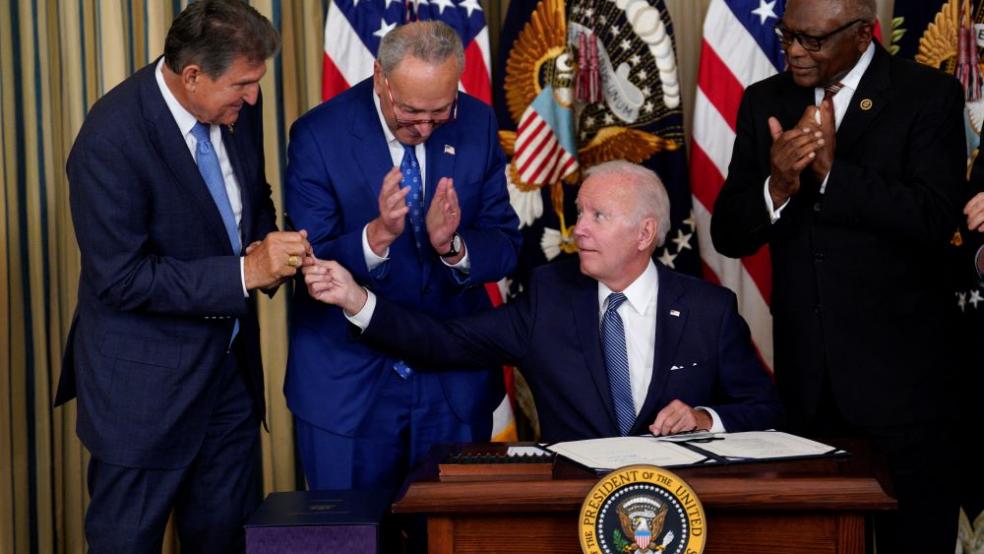Clean energy tax credits enacted as part of the Inflation Reduction Act last year “are likely to be far more popular than anticipated,” The Wall Street Journal’s Richard Rubin reports. That could be good for the environment, potentially helping to cut carbon emissions, but it may also raise the cost of the credits by hundreds of billions of dollars — to the point that the new law’s expected deficit reduction could be completely wiped out.
Rubin cites “an emerging consensus of government and private-sector forecasters” now anticipating the tax credits to be claimed at a much higher rate as a result of the new incentives and the growing popularity of electric vehicles. The forecasters reportedly include those at Goldman Sachs, a Brookings Institution conference and even the White House Office of Management and Budget.
“The Goldman and Brookings analyses contend that the tax credits could cost American taxpayers three times as much as the $271 billion forecast when Congress passed the law,” Rubin reports. “The OMB figure points in the same direction, though its estimates about revenue from tougher tax enforcement—which are larger than congressional projections—turn the law from deficit-increasing to deficit-reducing.”
The bottom line: Whether the Inflation Reduction Act ultimately reduces deficits, as Democrats had touted, could depend on the use of those green tax credits and numerous other factors, such as the return on additional funding for the IRS. And, Rubin notes, Republicans may still look to undo the green energy tax breaks as they look to extend other tax cuts set to expire in 2025.
These types of projections are often uncertain, but one thing is clear: The political fight over the Inflation Reduction Act isn’t over.





